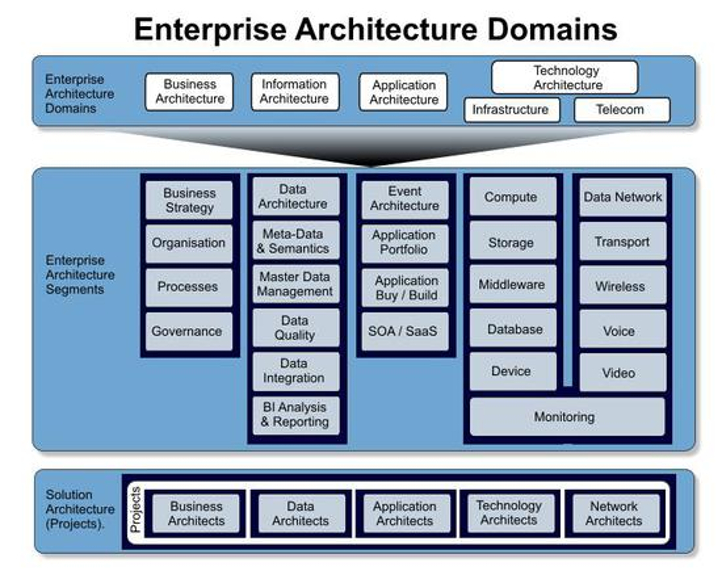

Enterprise Architecture
A definition of Enterprise Architecture:
"The structure of components, their inter-relationships, and the principles and guidelines governing their design and evolution over time."
Another paraphrased but eloquent definition of Enterprise Architecture:
"Enterprise Architecture - Is the definition of the components, their inter-relationships,
and their evolution that describe the enterprise as it is, as it will be, and provide guidance on how to change."

An Enterprise realises many benefits by implementing Enterprise Architecture (EA) including:
- Clearly defined "As Is" and "To Be" states of the Business and Information Systems, Technologies, People, Stakeholders, Governance
- Every department and staff member has common terminology and a repository of knowledge they can draw from when planning for the future
- Well documented business processes and workflows
- Significant savings in acquisition costs and on-going savings in the operational costs of Information Technology and Management Information Systems
- Improvements in these areas have flowon effects in the workplace, where staff are under less pressure because the business and information systems they use operate efficiently.
- External stakeholders (suppliers, customers) get better access to your business resulting in lower supply latency and more sales.
If you would like more information, please Contact Us



